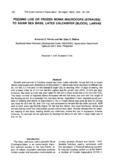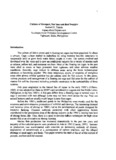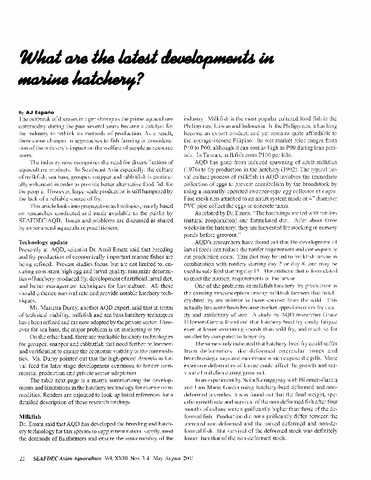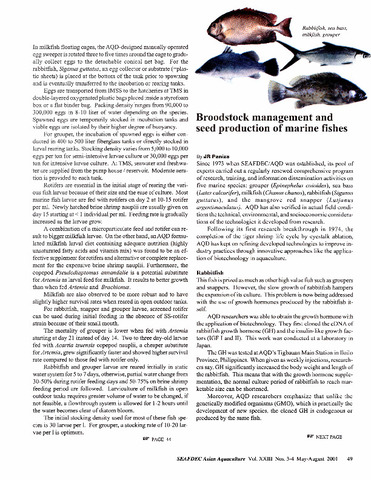Feeding live or frozen Moina macrocopa (Strauss) to Asian sea bass, Lates calcarifer (Bloch), larvae
Share
Abstract
Growth and survival of hatchery-reared sea bass, Lates calcarifer, larvae fed live or frozen Moina macrocopa were determined, In Experiment 1, Moina was fed to sea bass of different sizes: 3.6 mm, 5.5 mm and 7.6 mm standard length (SL) at stocking. After 15 days of rearing, fish with a mean initial SL of 3.6 mm had the highest specific growth rate (SGR, 18.82% per day). However, the mean survival rate was higher for fish with a mean initial size of 5.5 mm (64.76%). The mean number of ingested Moina increased with the fish body size and with the length of the feeding period. In a separate trial, sea bass larvae, regardless of size, ingested equal numbers of Artemia and Moina. In Experiment 2, live or frozen Moina was used as feed for 20-day sea bass fry (8.3 mm Sl and 13.4 mg) and compared to minced fish-by-catch (control). SGR and survival were significantly higher for fish fed live Moina. Sea bass fed frozen Moina and minced fish-by-catch had comparable growth and survival rates. Results showed that for hatchery rearing of sea bass, feeding Moina can effectively reduce the use of expensive Artemia. However, fry survival can be optimized by feeding live Moina to fish with a mean initial size of 5.5 mm SL.
Suggested Citation
Fermin, A. C., & Bolivar, M. E. C. (1994). Feeding live or frozen Moina macrocopa (Strauss) to Asian sea bass, Lates calcarifer (Bloch), larvae. The Israeli Journal of Aquaculture-Bamidgeh , 46(3), 132-139. http://hdl.handle.net/10862/1455
Subject
Taxonomic term
Collections
- AQD Journal Articles [1249]
Related items
Showing items related by title, author, creator and subject.
-
Culture of grouper, sea bass and red snapper
Toledo, Joebert D. (University of the Philippines Aquaculture Society, Inc., 2001)Marine fish production has increased dramatically in the past ten years and majority of the cultured species were produced in Asia in 1992. Increase in production was accompanied with concerns on increasing outbreak of ... -
What are the latest developments in marine hatchery?
Españo, A. J. (Aquaculture Department, Southeast Asian Fisheries Development Center, 2001) -
Broodstock management and seed production of marine fishes
Paniza, J. R. (Aquaculture Department, Southeast Asian Fisheries Development Center, 2001)






